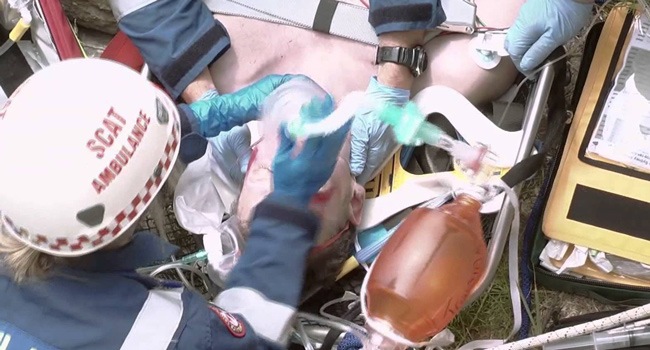
Intubation onboard the ambulance: a comparison of the conventional intubation systems - VIDEO
Comparison of the effectiveness of conventional intubation with a laryngoscope in a moving ambulance and on a static ambulance. An experimental study.
Airway management and endotracheal intubation may be required urgently when a patient deteriorates in an ambulance or aircraft during interhospital transfer or in a prehospital setting.
The aims of the experimental study to detect the difference between the two types of intubation on ambulance
The objectives of this study were: to compare the effectiveness of conventional intubation by Macintosh laryngoscope in a moving ambulance versus that in a static ambulance, and to compare the effectiveness of inverse intubation and GlideScope laryngoscopy with conventional intubation inside a moving ambulance.
The experiment was conducted in an ambulance provided by the Auxiliary Medical Service in Hong Kong.
Intubation on an ambulance: methods and results
A group of 22 doctors performed endotracheal intubation on manikins with Macintosh laryngoscope in a static and moving ambulance.
In addition, they performed conventional Macintosh intubation, inverse intubation with Macintosh laryngoscope, and GlideScope intubation in a moving ambulance in both normal and simulated difficult airways.
Main outcome measures: the primary outcome was the rate of successful intubation.
The secondary outcomes were time taken for intubation, subjective glottis visualisation grading, and eventful intubation (oesophageal intubation, intubation time >60 seconds, and incisor breakage) with different techniques or devices.
In normal airways, conventional Macintosh intubation in a static ambulance (95.5%), conventional intubation in a moving ambulance (95.5%), as well as GlideScope intubation in a moving ambulance (95.5%) were associated with high success rates; the success rate of inverse intubation was comparatively low (54.5%; P=0.004).
In difficult airways, conventional Macintosh intubation in a static ambulance (86.4%), conventional intubation in a moving ambulance (90.9%), and GlideScope intubation in a moving ambulance (100%) were associated with high success rates; the success rate of inverse intubation was comparatively lower (40.9%; P=0.034).
En-route intubation in an ambulance by conventional Macintosh laryngoscopy is superior to inverse intubation unless the cephalad access is impossible.
GlideScope laryngoscopy appears to be associated with lower rates of eventful intubation in difficult airways and has better laryngoscopic view versus inverse intubation.
Tracheostomy During Intubation In COVID-19 Patients: A Survey On Current Clinical Practice
READ ALSO
SOURCE

